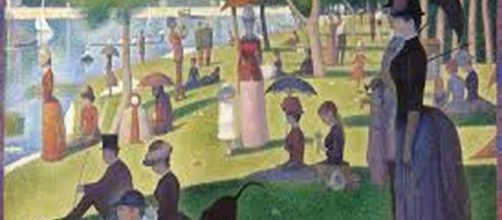Have you noticed all the cell phone use in public places today, the number of people bent over their handheld social media devices at the gym, in line at the store – even at dinner tables in restaurants?
Oh my aching back
The phenomenon first made the news in 2014 when CBS News reported cell phone use as a health hazard. Its been calculated that we slump over our devices an average of 2 to 4 hours every day, bending our necks at unnatural angles to text and e-mail, creating a gravitational pull from the weight of our heads.
The lost art of reading faces
Another concern about cell phone use is voiced by Camille Paglia, celebrated social critic and professor at the University of the Arts in Philadelphia. She fears for our humanity. As reported in the Hollywood Reporter Magazine this week, Paglia contends that because movie attendance has gone down and cell phone use has gone up -- particularly among young people -- human relations are bound to suffer. As she explained it, movies have long conveyed our inwardness through the power of close-ups. Without seeing ourselves on the big screen, the younger generation misses out on the subtleties of facial expression not all that apparent on small screens. “Texting has become the default discourse for an entire generation,” she said.
“The ability to read real-life facial expressions and body language is alarmingly atrophying.”
Posting racy images is not intimacy
But wait, there may be yet another step toward the end of personal relations from our cell phone use: sexting. So says a report from this week's edition of Ars Technica, a technology news website.
Posting nudes and racy messages is increasing among teens, both male and female. Missing in action is a personal relationship, closeness.
Worst case scenario
All of which conjures up a 19th century painting, a kind of futuristic portrait of our isolated selves after decades of fixated cell phone use. It's as if the painting came after us, not before.
I'm talking about Georges Seurat's “Sunday Afternoon on the Grande Jatte,” one of the saddest commentaries on the human condition in all of art history. Despite the number of figures, there's little or no interaction among them. I'm not alone in noticing this. The way art historian Linda Nochlin sees it, Seurat's painting is the picture of alienation in the modern world, his comment on the numbing monotony and banality of the lives of middle class Parisians – the working stiffs, you might say. And they look it.
It doesn't have to end like this
Of course, Seurat's painting style – pointillism – using colored dots instead of paint strokes, adds to the mechanized air. But he also describes people on an island in the Seine presumably there to enjoy the day of leisure, but showing no joy. All you see are empty faces, rigid bodies and near-zero interaction. What you see, then, can be said to be the most advanced stages of our cell phone fixation.


